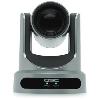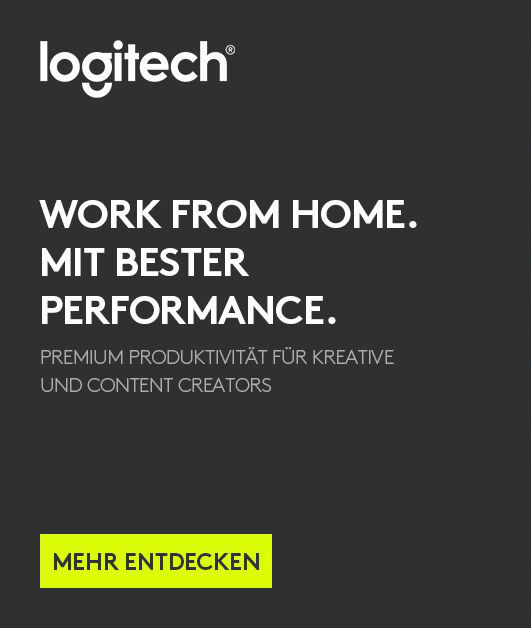Q-SYS Designer: Support For Scaling Licenses, Loudspeakers, & Expanders
Improvements
[Platform]
Q-SYS Scaling Licenses for Core Nano and Core 8 Flex
Q-SYS 9.4.0 includes support for the new Q-SYS collaboration Bundle and Q-SYS Commercial AV Bundle scaling licenses for the Core Nano and Core 8 Flex processors.
- Q-SYS collaboration Bundle Scaling License: This license focuses on expanding resources for meeting spaces, including AEC processing, Softphones, and NM-T1 microphones (when released). It also unlocks more all-purpose DSP processing power and expands the networked audio channel capacity for Q-LAN/AES67 to 128x128.
- Q-SYS AV Bundle Scaling License: This license focuses on expanding resources for larger BGM and paging applications, including all-purpose DSP processing power, networked audio channel capacity (128x128 channels of Q-LAN/AES67), and Media Stream capacity (up to 24x24). It also increases the maximum Q-SYS peripheral count (up to 48 Q-SYS peripherals).
Note: To learn more about these licenses, see the Q-SYS Collaboration Bundle Scaling License and Q-SYS Commercial AV Bundle Scaling License product pages on the QSC website. To learn how to activate Q-SYS Feature Licenses on the Q-SYS Core processor, see the Licensing topic in Core Manager help.
[Audio]
Q-SYS NL Series Network Loudspeakers
Q-SYS 9.4.0 introduces support for two NL Series network PoE loudspeaker models. These models are available from the Inventory > Loudspeakers - High-Z and PoE category.
- NL-C4: Network PoE ceiling-mount loudspeaker for Q-SYS
- NL-P4: Network PoE pendant-mount loudspeaker for Q-SYS
Refer to the above topics for a hardware overview and s to related Q-SYS Designer Software component topics.
Note: In Q-SYS 9.4.0, designs support a maximum of 32 QIO Series and NL Series devices combined.
Q-SYS QIO Series Audio I/O Expanders
Q-SYS 9.4.0 introduces support for three QIO Series audio I/O expanders. These models are available from the Inventory > Audio-Q-LAN category:
- QIO-ML4i: Network audio expander for Q-SYS with four (4) mic/line inputs
- QIO-ML2x2: Network audio expander for Q-SYS with two (2) mic/line inputs and two (2) line outputs
- QIO-L4o: Network audio expander for Q-SYS with four (4) line outputs
Refer to the above topics for a hardware overview and links to related Q-SYS Designer Software component topics.
Note: In Q-SYS 9.4.0, designs support a maximum of 32 QIO Series and NL Series devices combined.
Delay Component: Distance and Temperature
You can now ally configure the Delay calculation for each Tap based on distance and temperature, which is especially useful for outdoor venues.
To learn more, see the Delay topic.
[Video]
NC Series: Is Moving LED
A new LED indicator within the Status/Control component (and downstream USB Video Bridges) for NC Series cameras indicates when the camera is actively panning, tilting, or zooming. (Focusing does not affect this control.) This provides a simple way to obtain camera movement status rather than needing to for PTZ coordinate changes.
[Control]
Q-SYS TSC Series Gen 3
Q-SYS 9.4.0 adds support for three new touch screen models, each with a Projective Capacitive (PCAP) multi-touch surface with 24-bit or display. These models are available from the Inventory > Control section.
- TSC-50-G3: 5-inch display with Ambient Light Sensor and NFC antenna
- TSC-70-G3: 7-inch display with Ambient Light Sensor, Proximity Sensor, NFC antenna, and programmable LED light bars
- TSC-101-G3: 10.1-inch display with Ambient Light Sensor, Proximity Sensor, NFC antenna, and programmable LED light bars
In addition, support for the TSC Series Gen 3 touch screen controllers includes two new components specifically for these new touch screens:
Lightbar
Use the Lightbar component, available from the TSC-70-G3 and TSC-101-G3 touch screen controller Inventory tree, to set the or of the two LED lightbars (left and right side). You can set the or for all LED modules or for each LED individually.
To learn how to use this component, see the Lightbar topic.
Sensors
The Sensors component, available for all TSC Series Gen 3 touch screen controller models from the Inventory tree, displays read-only information from the device's Ambient Light Sensor, Proximity Sensor (TSC-70-G3 and TSC-101-G3 only), and Near Field Communications (NFC) Sensor. You can also configure a brightness threshold value to trigger the display to become brighter as ambient lighting conditions change, as well as configure a proximity threshold value to trigger the display to wake.
To learn how to use this component, and to learn about the sensor capabilities of TSC Series Gen 3 touch screen controllers, see the Sensors topic.
Media Display: Support for live camera preview streams in UCIs
As an addition to the Media Display feature, all TSC Series Gen 3 touch screen controllers and the UCI Viewer app support up to two simultaneous camera preview video streams within a UCI. Displaying Q-SYS camera live preview video is as easy as dragging and dropping the Preview control from the camera's Status/Control component (or downstream USB Video Bridge) into your UCI.
To learn more, see the Media Display topic.
Q-SYS QIO Series Control I/O Expanders
Q-SYS 9.4.0 adds support for the QIO-GP8x8, which expands your Q-SYS system with 8 GPIO inputs and 8 GPIO outputs.
To learn more, see the QIO-GP8x8 topic.
Note: In Q-SYS 9.4.0, designs support a maximum of 32 QIO Series and NL Series devices combined.
Color Picker
Use the Color Picker to easily a or - either visually with a control surface or manually with numeric values - for use by a downstream component that can receive a or hex code, such as the Lightbar component.
To learn how to use this component, see the Color Picker topic.
UCI s: Support for CSS render styles
UCI Styles now support the application of filmstrip and layer render styles to supported control types:
- Meters, knobs, and faders support filmstrip rendering
- Meters and faders support layer rendering
To learn about how to code your CSS for these new render styles, and to see a number of examples, see the Rendering s for Meters, Knobs, and Faders section of the UCI Styles topic.
Scripting: EzSVG support
Use the EzSVG library to create SVG images dynamically within your design - for example, to help users visualize component status and control level changes.
To learn how to use this Lua library within Q-SYS, see the EzSVG topic.
Scripting: State Trigger control
Q-SYS 9.4.0 introduces support for State Trigger controls for all ing platforms, including UCI Controller, Text Controller, Block Controller, and plugins. This new control type allows for status feedback (for example, power state feedback) and position feedback (for example, the position of a motorized shade) to be used to determine whether to trigger an event.
To learn more, see the State Trigger topic.
Scripting: VSCode editor
The VS Code editor, released as an alternative editor in Q-SYS 9.3.0, is now the default editor in Q-SYS 9.4.0 and later. The VSCode editor is a robust alternative to the legacy editor. It offers:
- Code completion (Intellisense) - In addition to expanded code completion for standard Lua functions and Q-SYS Lua modules, the VSScript editor suggests controls that have been defined in ing components such as Text Controller, as well as Named Controls and Named Components.
- Error highlighting - The VSCode editor indicates any parse errors directly within the script.
- Snippets - These are commonly used blocks of code. As you author code, suggested snippets appear for ion.
- Hover help - Simply hover over a method to view its syntax and purpose.
In 9.4.0, the VSCode editor introduces syntax highlighting, Intellisense, completion hints, and hover help for the SerialPorts and SerialServerPorts methods.
The VSCode editor is able from the Q-SYS Designer Software > File > Preferences menu. To learn more, and to see examples, view the VSCode Editor topic.
Scripting: Dante API
Use the Dante API (DAPI) to communicate with a Dante device's GPIO interface from a Q-SYS Lua Script.
Note: Initial Dante device support includes Audio-Technica microphones only. Other Dante devices that use the DAPI for GPIO might work but are not tested. This is a general interface and the actual usage of the GPIO on the device is specific to the device being controlled.
To learn more, see the Dante API topic.
[Management]
Multicast TTL for camera and AV streams
In Core Manager and Enterprise Manager, network administrators can now adjust the Time-to-Live (TTL) value for multicast Q-SYS Camera streams and Q-SYS Shift™ AV streams between Video Endpoints. This determines the maximum number of hops multicast traffic is allowed to traverse the network between origin and destination, which can be useful in cases where network traffic is heavy and it is necessary to prevent excessive hop counts.
To learn more, see the Core Manager > Network> Multicast topic.
Direct access to Core Manager and Peripheral Manager from Configurator
When you select a Q-SYS Core processor or peripheral within Configurator, Core Manager or Peripheral Manager now open directly within the Configurator window.
Enterprise Manager: Assets viewer enhancements
The Assets page in Enterprise Manager includes multiple updates:
- More granular asset details, such as serial number, date & time information, and network information, are now able from the columns menu.
- A new able 'Requires Reflect License' column indicates in Yes/No at whether a Q-SYS asset requires a Reflect license.
- Clicking the + button for an asset now reveals asset details in JSON format, including the ability to copy and export those details in JSON format.
To learn about viewing and downloading asset information, see the Assets topic in Enterprise Manager Help.
Bug fixes
- Video: Stability for the USB Video Bridge "Auto Privacy" feature has been improved.
- Video: Recalling a snapshot with Manual White Balance values now applies those values right away, without having to load the snapshot a second time.
- Control: Plugins configured to accept serial control connections now receive serial commands if they are attached to a Command Buttons component.
- Management: The Core Manager > Status page no longer shows "Unavailable" immediately following a design deploy.
- Platform: Zooming in Designer now focuses on the location of the cursor rather than the ed component.
- Platform: Some peripherals no longer temporarily show as "Missing" after re-deploying a design and Dynamic Pairing is enabled.
- Platform: Designs that contain a large number of plugins now compile much faster when deploying or emulating.
- Platform: Designs that contain SSH connections (or plugins that use SSH, such as Zoom Rooms) no longer cause the Q-SYS_Designer_Trace.log file to become excessively large.


